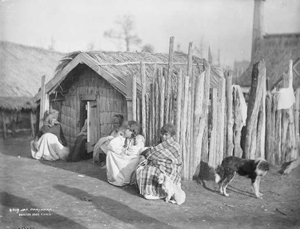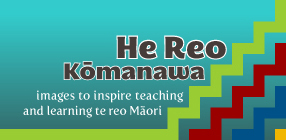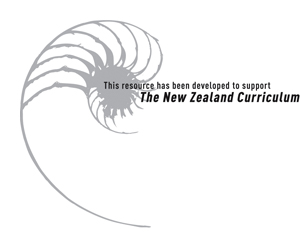
ImageTeaching and learning sequenceAdditional tasks and activities
Sample Task Sequence 9: “At Parihaka”, c. 1887
Digital resource from the Te Papa Collection
Image: “At Parihaka”, c. 1887


Copyright: Reproduced courtesy of the Museum of New Zealand Te Papa Tongarewa
Creator: Burton Brothers, photographer, c1887
Identifiers: Museum of New Zealand Te Papa Tongarewa number C.010272. TLF resource R6476
Source: Museum of New Zealand Te Papa Tongarewa, http://www.tepapa.govt.nz
Students should be able to:
7.3 express and respond to approval and disapproval, agreement and disagreement;
7.5 read about and recount actual or imagined events in the past.
Links to other learning areas
Social sciences, especially history
Te reo Māori text
Te wahanga tuatahi
Ko Taranaki te maunga.
Ko Parihaka te marae.
Ko Te Whiti-o-Rongomai rāua ko Tohu Kākahi ngā rangatira.
Tākina mai, tākina atu. Haumi e, hui e, taiki e.
Tihei mauri ora!
I te wā 1870–1880, ka karangahia ngā iwi o Aotearoa kia hui ki Parihaka. Ko te kaupapa i rēira me pēhea e wero atu te kāwanatanga o tauiwi ki te kati i tā rātou mahi, arā, te raupatu i ngā whenua Māori huri noa i Aotearoa. I whakaturengia e te kāwanatanga kia tango i ngā whenua o ngā Maori i pakanga ki te kāwanatanga. Nā te pōhēhē, he nui ngā whenua i raupatuhia.
Ko te karanga o Te Whiti, “Ahakoa te aha, whārikihia a tātou wero i runga i te aroha, te manaaki, te rangimārie. Whāia ngā tikanga o te atua, hei tiaki i a tātou.”
Te wāhanga tuarua
Tau mai ana ngā hōia me ngā pirihimana o te kāwanatanga, ā, ka mauheretia a Te Whiti rāua ko Tohu Kākahi. Ka kino hoki ngā pirihimana me ngā hōia kia hoariri mai ngā Māori ki a rātou. Ka pōuri te ngākau o te iwi o Parihaka, engari i pūmau tonu rātou ki ngā kupu o Te Whiti. “Mā te rangimārie, mā te atua, ka tū anō tātou āpōpō.”
Nā rēira, ahakoa ngā taumahatanga o taua wā tae noa ki te ao hou nei, kei te mau tonu ki ngā tikanga o Te Whiti.
I te whakaahua “At Parihaka”, c. 1887, ko ngā wāhine o Taranaki e pupuri ana te mana o Parihaka. Ka tau atu te ngākau māhaki ki a rātou e mokemoke mai ana, e tangi ana hoki, ki te ao. “Mā te hinengaro manaaki o Aotearoa e kawe, e hoe i te waka kia tae ngāwari koa.”
Teaching and learning sequence
When appropriate, the teacher shares the intended learning outcomes with the students and negotiates success criteria with them. The teacher and students discuss these throughout the teaching and learning sequence.
1. Viewing of image
The students view the image: “At Parihaka”, c. 1887.
2. Pre-reading discussion
The students work in pairs or groups of four, discussing the image, noting the title, and sharing any knowledge they may have about the events that took place at Parihaka in the late nineteenth century. The teacher records key new te reo Māori vocabulary to create a class word bank.
3. Reading te reo Māori text
This text has been designed as a split information task. Half the class is given a copy of te wahanga tuatahi and the other half is given te wahanga tuarua. At the beginning of the task, the students are seated with others who have the same part of the text. They read silently, but are free to discuss any areas of difficulty within same-text groups. After the reading, they may use a dictionary to assist with any words they were unable to guess from context and to confirm their guesses.
Each student makes a mind map summarising key information. They will use this as speaking notes when they share the information with a student from the other group.
4. Pair interactive task
When the students in both groups have finished reading their text and making their mind maps, each student pairs up with a student from the other group. They then take turns to tell each other the information they have just read, using their mind maps as speaking notes. The teacher tells them not to read from the text or look at their partner’s text, but does encourage them to ask their partners to repeat or rephrase information when necessary.
5. Teacher clarification
After the reading and sharing of information, the teacher draws attention to new vocabulary and grammar and clarifies any remaining uncertainties.
6. Pair mind mapping
Working in their pairs, the students combine their information to make a joint mind map summarising the full text. The teacher circulates, helping with vocabulary and encouraging the students to kōrero Māori. This mind map is kept safe, as it will be used later, with additional information, in the presentation.
7. Inquiry
Each pair of students chooses one of the following topics for inquiry:
- Further investigation into the events that took place at Parihaka
- Te Whiti and his legacy of rangimārie
- Recent initiatives to right the wrongs of the past.
The pairs of students form a written question on which to focus their inquiry and then each student makes an inquiry plan that identifies how they will seek answers to their question. This might be through reading (using the library or Internet), museum visits, or interviewing whānau members or kaumātua. While the teacher provides support and oversight, the students undertake at least part of their inquiries for homework. They make written notes in which they record keywords and simple sentences in te reo Māori and they bring these notes to school.
8. Preparation of information for presentation
The pairs of students pool the results of their inquiries and discuss how their findings can be incorporated into their joint mind map. This involves discussion and the synthesis, prioritisation, and organisation of information. As the students work, the teacher circulates, helping with vocabulary and encouraging the students to kōrero Māori.
9a Oral presentation
Each pair of students joins up with another pair. Within these new groups of four, each pair of students takes turns to present their information, in te reo Māori, to the two new members of their group.
9b Written presentation
Using their mind map as a plan, each pair of students collaborates to write a text in te reo Māori about what they have learned from the set text and their own inquiry. Texts that reach a suitable standard could be sent to a company that publishes resources in te reo Māori or could be self-published on the Internet.
10. Reflection
The students have 10–15 minutes to reflect individually on what they have learned from this cycle of learning. They briefly record the following information in te reo Māori:
- Tuhia ngā kupu hou. (List the new vocabulary you learned.)
- Tuhia tētahi whakaaro hou i akongia e koe. (Write one new thing you learned from your own inquiry.)
- Tuhia tētahi whakaaro hou i puta mai i tō hoa mahi. (Write one new thing you learned from your partner.)
Following the individual reflection, pair and class reflection focuses on new vocabulary learned and the extent to which the students succeeded in using this in their oral and written presentations.
Additional tasks and activities
Depending on their students’ needs and interests, teachers may like to select from some of the following tasks and activities:
- Explore the changing influence of Māori on recent political events.
- Explore the changing roles of Māori in New Zealand society over the past century.
- Explore and discuss the Parihaka incident as a uniting force for Māori.


